Advanced Technology
![]()
Prosthetic Innovations
- RHEO KNEE®
- Evendolite – The Adaptive
- Utah Arm 3
- C – Leg Prosthetic Knee System
Orthotic Innovations
- Stance Control Orthotic Knee Joint
- STARband cranial remolding orthosis
Rheo Knee®
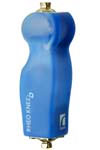 Imagine a prosthetic knee system so smart that it automatically adapts to an individual’s walking style and environment, learning continuously and optimizing control over time.
Imagine a prosthetic knee system so smart that it automatically adapts to an individual’s walking style and environment, learning continuously and optimizing control over time.
The RHEO KNEE® is the world’s first microprocessor swing and stance knee system to utilize the power of artificial intelligence. Capable of independent thought, it learns how the user walks, recognizing and responding immediately to changes in speed, load and terrain.
The knee adapts to any situation, and not just within pre-set and limited parameters, enabling the individual to quickly regain confidence in his or her ability to walk where and how they choose.
Performance benefits
- Continuous adaptation – the knee system’s highly developed artificial intelligence means that it is capable of thinking for itself. It continuously recognizes, learns and responds to individual walking styles and keeps pace with changes in speed, load and terrain.
- Natural and efficient motion – the high precision actuator technology, which controls the knee’s movements, produces an exceptionally smooth and fast response throughout every stage of the gait cycle. Unlike existing hydraulic systems, this response offers customized levels of resistance (knee flexion) as, and only when, the individual needs it. That’s why walking effort is reduced to a minimum and motion is much smoother and more natural.
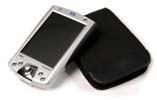 Enhanced security – multiple safeguards are provided against inadvertent stance release, IE the knee is less likely to buckle at crucial moments. Disturbances in the walking path are recognized automatically and stance support instantly activated to protect the user from a potential stumble and fall.
Enhanced security – multiple safeguards are provided against inadvertent stance release, IE the knee is less likely to buckle at crucial moments. Disturbances in the walking path are recognized automatically and stance support instantly activated to protect the user from a potential stumble and fall.- Simple and convenient – sophisticated technology that is easy to use, it doesn’t come much better! The user-friendly “plug in and play” design ensures a straightforward set up and calibration process with the minimum of fuss. The system is so efficient it only requires a small battery that lasts up to 48 hours and that takes only two to four hours to recharge, at home or on the road. The battery can be switched off when not in use.
Endolite – The Adaptive
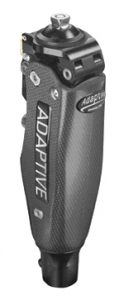 Going Places? The Adaptive Knee from Endolite is the first microprocessor controlled knee that combines the power and stability of hydraulics with the natural comfort of pneumatics – a true partnership of three technologies that enables the knee to respond to the amputee’s body movements and the terrain for a smoother, more confident performance.
Going Places? The Adaptive Knee from Endolite is the first microprocessor controlled knee that combines the power and stability of hydraulics with the natural comfort of pneumatics – a true partnership of three technologies that enables the knee to respond to the amputee’s body movements and the terrain for a smoother, more confident performance.
The subtle balance between body power and limb control is what makes the Adaptive different from all other knees. Whether walking at fast or slow speeds; negotiating stairs or ramps; in crowded malls or out on the golf course – the Adaptive Knee gives the amputee the most freedom possible to feel secure enough to get to their destination with confidence.
For added comfort and confidence, the Adaptive Knee allows the amputee to wear any existing foot and/or socket designs and both a standard and a shock & torsion pylon are included with every knee… Get there with the ADAPTIVE.
Utah Arm 3
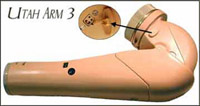 Since 1981, the Utah Arm has been the premier myoelectric arm for above elbow amputees. It was originally developed at the University of Utah by the Center for Engineering Design, led by Dr. Steve Jacobsen. In 1987, Motion Control released the Utah Arm 2, with entirely re-engineered electronics that made the Utah Arm the most durable and dependable myoelectric arm available.
Since 1981, the Utah Arm has been the premier myoelectric arm for above elbow amputees. It was originally developed at the University of Utah by the Center for Engineering Design, led by Dr. Steve Jacobsen. In 1987, Motion Control released the Utah Arm 2, with entirely re-engineered electronics that made the Utah Arm the most durable and dependable myoelectric arm available.
The Utah Arm 3 – One Step Closer to Nature
In 2004, the Utah Arm 3 introduced microprocessor technology into the Arm, with a Computer Interface that allows the prosthetist or wearer to fine-tune the adjustments to achieve maximum performance. A variety of inputs may be used, so more options are available to more wearers. Meanwhile, the U3 still delivers the same sensitive, proportional control of elbow, hand and wrist (optional), letting the wearer move the arm and hand slowly or quickly in any position. This provides a more natural response with less effort than the traditional on/off movement.
What’s new about the U3?
- Simultaneous Elbow and Hand control! Because the Utah Arm 3 has two microprocessors, two functions can be controlled at once (optionally), thus producing a more natural movement.
- More Input Options
- EMG Preamps using disc or snap-type electrodes
- Motion Control Linear Potentiometer
- Motion Control Touch Pads
- Motion Control Force Sensor
- Otto Bock Linear Transducer
- Easy to Use Computer Interface For adjustments by the prosthetist The Set-Up Wizard guides you through the process of setting up your system step-by-step. Once set up, users can readjust by routing directly to the adjustment screens.
- Maximum Function The Utah Arm 3’s mobility and fine tuning allow any patient to achieve maximum function, including transhumeral, forequarter amputees and shoulder disarticulation. Many arm wearers master function quickly, after training with a qualified Therapist.
C – Leg Prosthetic Knee System
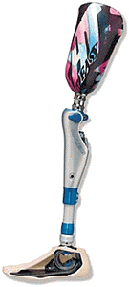 Otto Bock HealthCare introduced the C-Leg® microprocessor-controlled knee-shin system to the United States in 1999. Since then, thousands of wearers have benefited from this quantum leap in prosthetics – a dramatic improvement over all other prosthetic knees. Featuring unique microprocessor swing and stance phase control, its customized settings and constant readjustments, the C-Leg is truly one of a kind. The efficiency of the C-Leg’s swing phase dynamics, even at varying walking speeds and uneven terrain, provides a more secure, natural, and efficient gait.
Otto Bock HealthCare introduced the C-Leg® microprocessor-controlled knee-shin system to the United States in 1999. Since then, thousands of wearers have benefited from this quantum leap in prosthetics – a dramatic improvement over all other prosthetic knees. Featuring unique microprocessor swing and stance phase control, its customized settings and constant readjustments, the C-Leg is truly one of a kind. The efficiency of the C-Leg’s swing phase dynamics, even at varying walking speeds and uneven terrain, provides a more secure, natural, and efficient gait.
Getting started is easy. Using a PC-based custom software, a C-Leg Qualified Prosthetist customizes the C-Leg®;’s settings to fit the individual’s optimal gait pattern. The wearer is also trained and observed while walking on level and uneven terrain, and down stairs. In addition, a second set of settings can be created for a different activity, which the wearer can access by simply tapping their toe – offering choice without mechanical changes!
Stance Control Orthotic Knee Joint
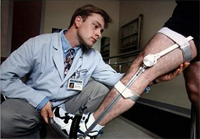
Over 600 types of upper and lower extremity orthoses are currently available.
Designed for patients with weak or absent quadriceps and varying degrees of knee instability. This lightweight orthosis will allow patients to regain their mobility and assist them in a more energy-efficient ambulation. The Horton SCOKJ® blocks flexion at any degree.
Our experienced practitioners are familiar with a range of custom fit and fabricated devices in such materials as metal, carbon graphite, and thermoformed plastic. Varieties of knee/ankle/foot and ankle/foot orthoses both correct and protect joint and muscle impairments as do upper extremity devices that focus on shoulders, elbows and wrists. An orthosis may consist of a single unit or an entire system of components tailored to a specific condition.
STARband cranial remolding orthosis
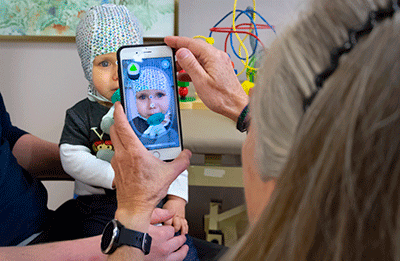 The STAR family of cranial remolding orthoses is used to treat deformational plagiocephaly, brachycephaly, scaphocephaly and other head shape deformities in infants 3—18 months of age. Thousands of infants have been successfully treated with the STARband, which was the first cranial orthosis available to practitioners across the United States with FDA clearance in 2000. We are proud to now be a part of their AllSTAR team of cranial providers!
The STAR family of cranial remolding orthoses is used to treat deformational plagiocephaly, brachycephaly, scaphocephaly and other head shape deformities in infants 3—18 months of age. Thousands of infants have been successfully treated with the STARband, which was the first cranial orthosis available to practitioners across the United States with FDA clearance in 2000. We are proud to now be a part of their AllSTAR team of cranial providers!
